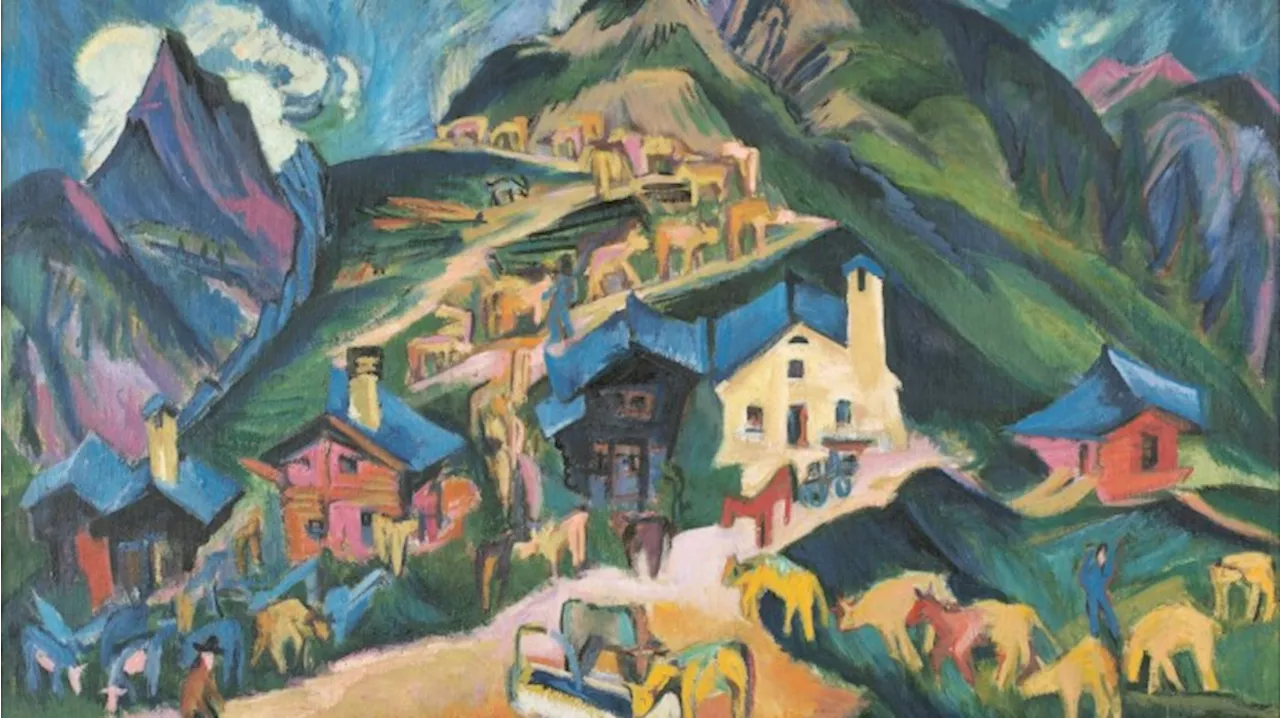This captivating exhibition explores the unlikely artistic connection between German Expressionist painter Ernst Ludwig Kirchner and a trio of Swiss idealists who formed the Rot-Blau Gruppe. Set against the backdrop of 1920s Davos, a sanatorium town turned refuge for artists, the show delves into how Kirchner's visionary Alpine landscapes inspired a distinct Swiss expressionism.
It is midnight on January 1, 1925, and a trio of young idealists in Obino, a hamlet in Switzerland’s southern Ticino region, look out on snowy slopes drenched in their imagination in brilliant visionary colours. They toast the new year by founding an art movement, the Rot-Blau Gruppe (Red Blue Group). Their inspiration is a strange, sick, morphine-addicted German painter in another Swiss mountain village, Davos .
Dismissed from war service to recover in Davos’s sanatorium in 1917, Ernst Ludwig Kirchner began transmuting the hectic urban expressionism of his shrill Berlin scenes to hallucinatory Alpine landscapes in glowing unnatural pinks and violets. For a brief moment — Thomas Mann’s The Magic Mountain, set in Davos, appeared in November 1924 — this rural backwater where motor vehicles were still banned became a centre for the German avant garde. It’s a fantastical tale, hardly known, and wonderfully told in a small, riveting centennial exhibition Ernst Ludwig Kirchner and the Artists of the Rot-Blau Group at Lugano’s Museo d’arte. There emerge the distinctive personalities of Hermann Scherer, originally a stone mason, Albert Müller, trained as a glass painter, and architect Paul Camenisch, as under Kirchner’s spell they created a distinct Swiss expressionism of the mountains. Kircher in turn recalibrated Berlin modernism’s prewar frenzy — harsh lines, violent chromatic contrasts, jauntily distorted perspectives — to depict the ancient rhythms of peasant life as anything but peaceful. A farmer’s wagon with bright yellow wheels and red horses hurtles across the canvas in “Chariot and Horses with Three Farmers”. The slow ritual of a parade of cattle climbing to the summit becomes in “Ascent to the Alpine Pastures” a feverish scene played out in the shadow of cloud-swirled magenta crags. Rising at the exhibition entrance are the peaks of Kirchner’s “Tinzenhorn” beneath a moonlit emerald sky: jagged purple-crimson ridges, a little church in the valley, every feature exaggeratedly angular. The luminosity evokes the clear, crisp mountain air, and as Kirchner explained, “the changes in form and proportions are not arbitrary, but rather serve . . . the mental expression”. The painting celebrates nature’s restorative power yet reflects the artist’s instability: between elation at his new surroundings, and the anguished effects of a breakdown during the first world war. Such dissonant landscapes, aggressively vertical, fraught with danger, dominate a vertiginous show. “The Ravine” is impassable, rushing headlong at the viewer, its slopes studded with pines as spiky and defiant as Kirchner’s feather-hatted Berlin streetwalkers. Wildly coloured, slanting bare trunks shine in the dark wood in “Landscape in a Forest with Stream”. Kirchner’s trees are recalled in the twisting tendrils and gnarled features in Camenisch’s self-portrait “Man in the Vines”, the torrent in his “Male Nude”, a huge wide-eyed figure about to bathe in a fast-coursing stream in an almost psychedelic scene. Müller’s more lyrical “Resting Woman” reclines in an abstracted wooded landscape patterned in black lattice work with pink touches, reminiscent of stained glass. The earliest painting, “Alpine Kitchen” (1918), from Madrid’s Thyssen-Bornemisza collection, records Kirchner’s initial home, a simple hut in the Stafelalp, and also his emotional state on arrival. In spiralling distortions, warm lemon, orange and rose walls and floors, swaying cupboards and beams, spin around a lone hunched figure with elongated nervy fingers, a self-portrait. Unlike Kirchner’s Berlin interiors, focused on powerful characters, here the surroundings overwhelm the downcast figure. “In Davos I found an emaciated man with a piercing feverish gaze who seemed to observe the approach of death,” wrote Henry van de Velde on first visiting Kirchner. But the painting carries hope: the tilting perspectives lead the eye to the wooden door, open to the Tinzenhorn, the vanishing point of the whole composition — giving a sense of air and freedom. All this looks superb at the Museo d’arte, whose dramatic main gallery fronted by an enormous window on the lake and mountains pulls landscape into the interior as Kirchner often does. In “Farmer with Child (Fairytale Teller)” the pair are illumined by a glistening snowscape outside the window, its light echoed in two white coffee cups — the mood as otherworldly as a fairytale. In deep pinks and purples, “Before Sunrise” depicts Kirchner and his partner Erna Schilling, fashionably dressed with bobbed haircuts, on their terrace; blue hills and pink trees surge towards them, Kirchner’s rough wood carvings of Adam and Eve loom above. Inevitably this Gauguin of the mountains enchanted Swiss painters. Kirchner hosted the three Rot-Blaus in Davos and arranged their exhibition in Dresden in 1926
Ernst Ludwig Kirchner Rot-Blau Gruppe Swiss Expressionism Davos German Expressionism The Magic Mountain Art Exhibition Lugano
United Kingdom Latest News, United Kingdom Headlines
Similar News:You can also read news stories similar to this one that we have collected from other news sources.
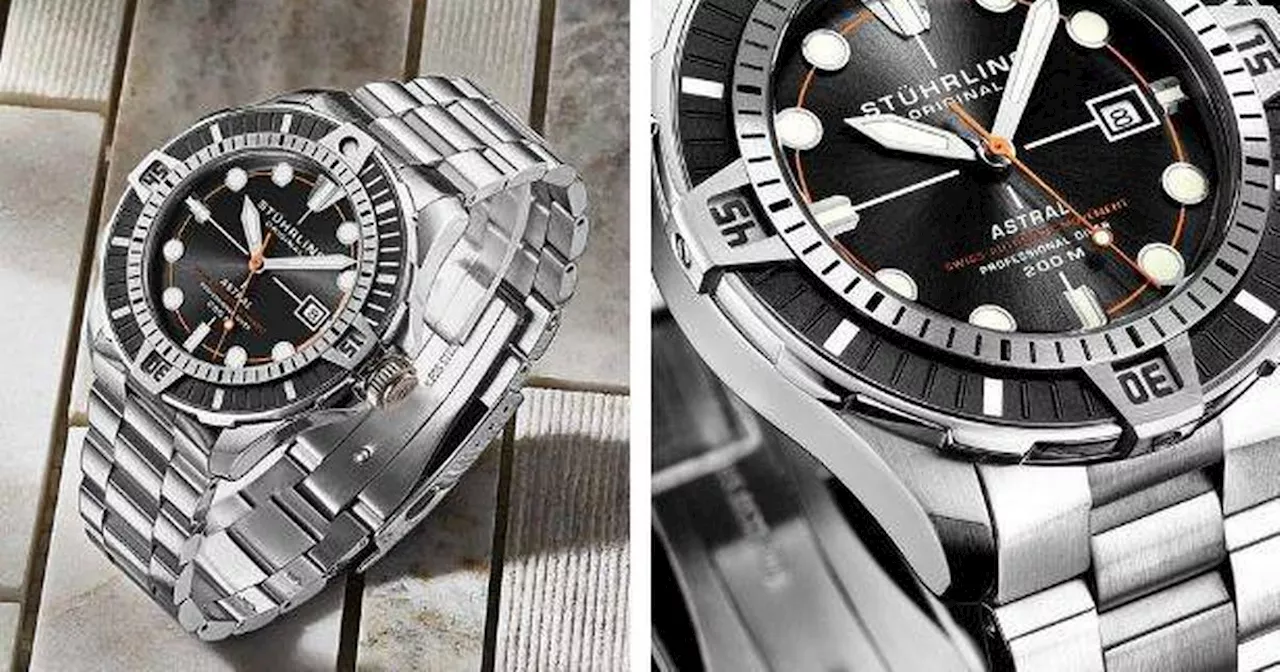 Debenhams' Luxury Watch Sale: Snag a Swiss Timepiece for Nearly 90% OffDon't miss out on Debenhams' incredible sale, slashing prices on luxury watches, including a stylish STÜHRLING Original Swiss Automatic Astral 45mm Watch down from £2,295 to £283.90. With limited-time deals and delivery options for Christmas, it's a perfect last-minute gift for any watch enthusiast.
Debenhams' Luxury Watch Sale: Snag a Swiss Timepiece for Nearly 90% OffDon't miss out on Debenhams' incredible sale, slashing prices on luxury watches, including a stylish STÜHRLING Original Swiss Automatic Astral 45mm Watch down from £2,295 to £283.90. With limited-time deals and delivery options for Christmas, it's a perfect last-minute gift for any watch enthusiast.
Read more »
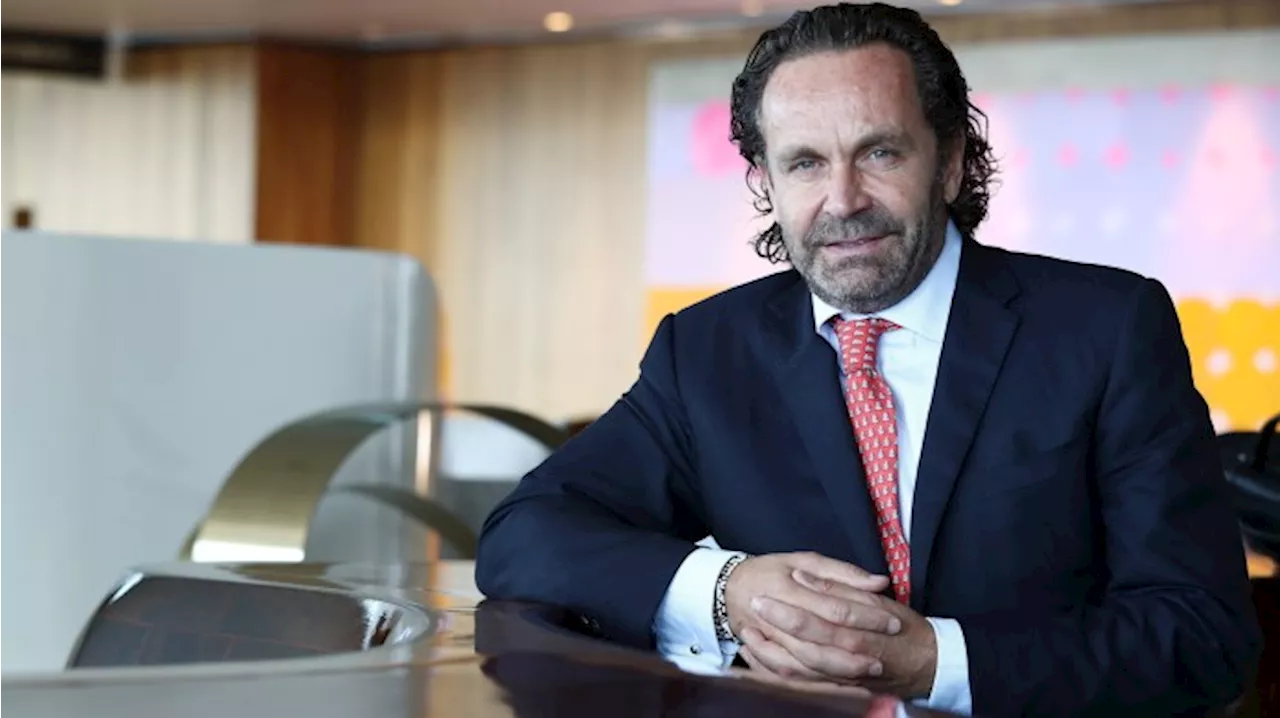 VistaJet’s Thomas Flohr accused of fraud in high court hearingSwiss entrepreneur’s lawyers strongly denied claims as unfounded and damaging
VistaJet’s Thomas Flohr accused of fraud in high court hearingSwiss entrepreneur’s lawyers strongly denied claims as unfounded and damaging
Read more »
 Leeds United face transfer competition for cut-price Swiss hot prospectThe Whites have been linked with a move for Switzerland U21 international Alvyn Sanches
Leeds United face transfer competition for cut-price Swiss hot prospectThe Whites have been linked with a move for Switzerland U21 international Alvyn Sanches
Read more »
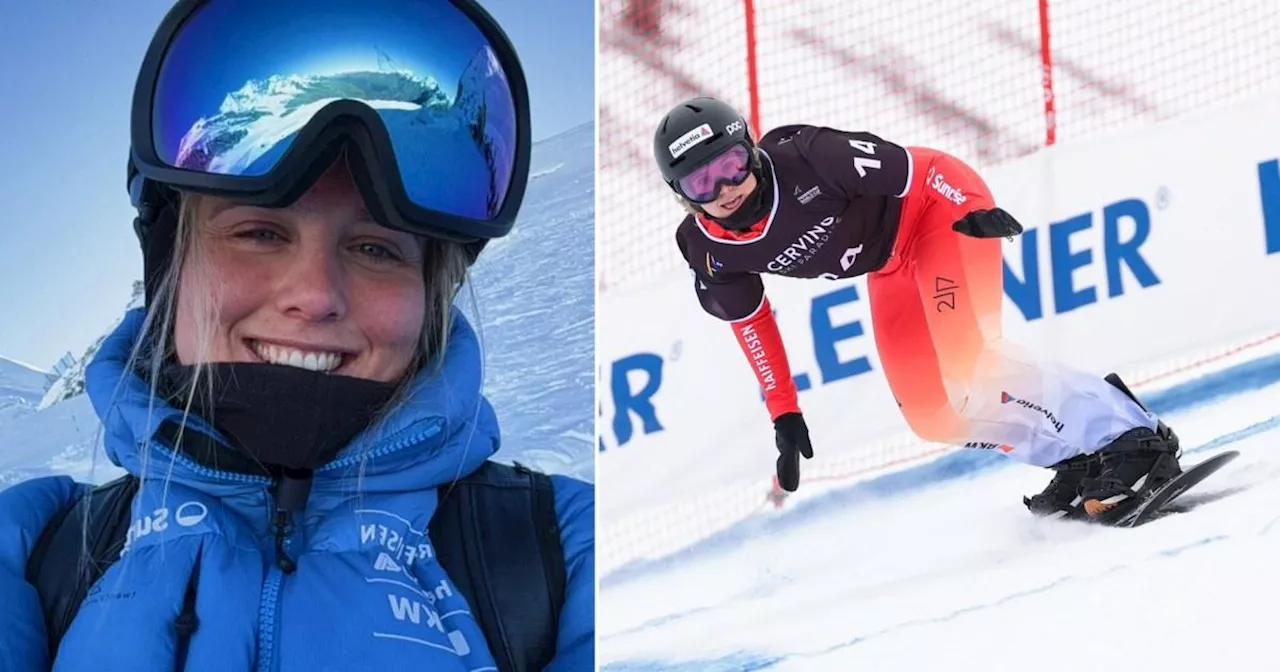 Olympic Snowboarder Sophie Hediger Dies in AvalancheSwiss snowboarder Sophie Hediger tragically passed away at age 26 after being caught in an avalanche.
Olympic Snowboarder Sophie Hediger Dies in AvalancheSwiss snowboarder Sophie Hediger tragically passed away at age 26 after being caught in an avalanche.
Read more »
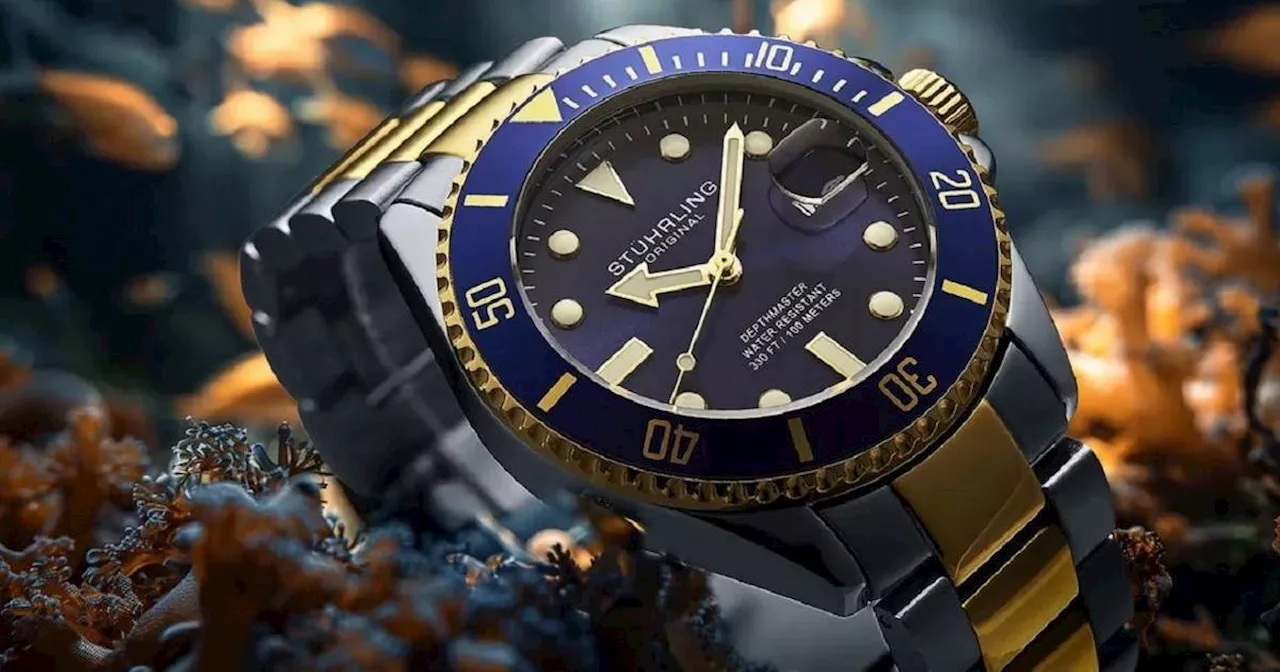 Last-Minute Christmas Gift: Debenhams Offers Massive Discount on Stuhrling Swiss WatchWith Christmas just around the corner, Debenhams is offering a fantastic deal on a stylish and durable Stuhrling Swiss watch. The watch, normally priced at £495, is now available for just £80.74, thanks to an 84% discount. The Stuhrling Swiss Quartz Depthmaster 40mm Dive Watch is water-resistant up to 330 feet and boasts a durable alloy case, making it suitable for both urban and outdoor adventurers.
Last-Minute Christmas Gift: Debenhams Offers Massive Discount on Stuhrling Swiss WatchWith Christmas just around the corner, Debenhams is offering a fantastic deal on a stylish and durable Stuhrling Swiss watch. The watch, normally priced at £495, is now available for just £80.74, thanks to an 84% discount. The Stuhrling Swiss Quartz Depthmaster 40mm Dive Watch is water-resistant up to 330 feet and boasts a durable alloy case, making it suitable for both urban and outdoor adventurers.
Read more »
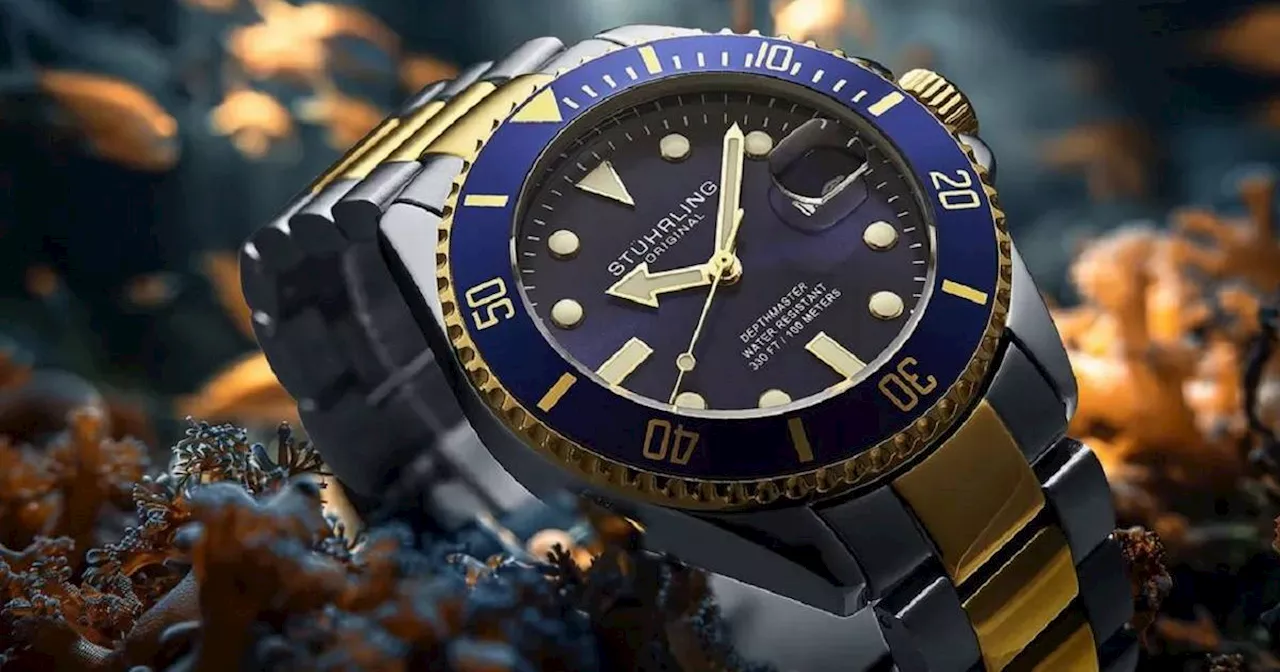 Last-Minute Christmas Gift Guide: Save 84% on a Stunning Swiss Dive WatchLooking for the perfect Christmas gift? This guide highlights a fantastic deal on a Swiss dive watch from Debenhams, as well as an affordable smartwatch option available on Amazon.
Last-Minute Christmas Gift Guide: Save 84% on a Stunning Swiss Dive WatchLooking for the perfect Christmas gift? This guide highlights a fantastic deal on a Swiss dive watch from Debenhams, as well as an affordable smartwatch option available on Amazon.
Read more »
